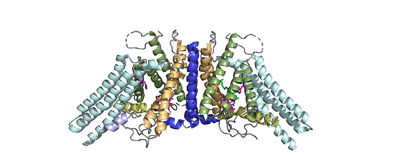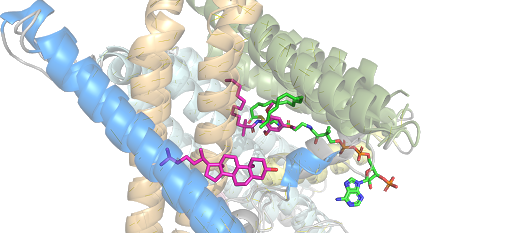Introduction
ACAT Wikipedia
History
Disease
Alzheimer's Disease
Alzheimer's Disease is a neurodegenerative disease characterized by accumulation of extracellular plaques that cause interferences with memory retrieval. These plaques are made up of amyloid beta (Aβ) peptides which are products of the cleavage of human Amyloid Precursor Protein (hAPP) (Chang et al., 2018; Shibuya et al., 2015). Within the cells, there is an accumulation of hyperphosphorylated tau (Chang et al., 2018; Shibuya et al., 2015). Research has shown that the concentration of cholesterol within cells can affect the production of Aβ (Chang et al., 2018; Shibuya et al., 2015). As the concentration of cholesterol in the endoplasmic reticulum of neurons increases, hAPP is downregulated (Chang et al., 2010; Shibuya et al., 2015). Inhibition of ACAT1 would lead to higher concentrations of cholesterol in the cells, signaling downregulation of hAPP. Less hAPP available decreases the amount of Aβ peptides being produced and decreases the available Aβ peptides that could form the extracellular plaques associated with Alzheimer's Disease (Chang et al., 2010; Shibuya et al., 2015).
Relevance
Function
[1]
[2]
[3]
Structural highlights


